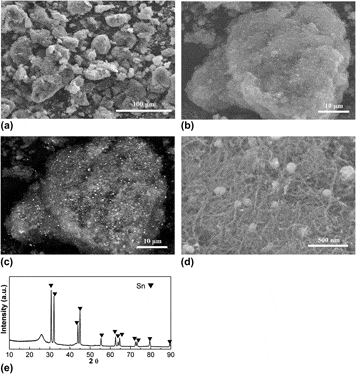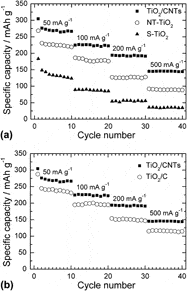Refine search
Actions for selected content:
106102 results in Materials Science
Orientation informed nanoindentation of α-titanium: Indentation pileup in hexagonal metals deforming by prismatic slip
-
- Journal:
- Journal of Materials Research / Volume 27 / Issue 1 / 14 January 2012
- Published online by Cambridge University Press:
- 16 December 2011, pp. 356-367
- Print publication:
- 14 January 2012
-
- Article
- Export citation
Introduction
-
- Journal:
- Journal of Materials Research / Volume 27 / Issue 1 / 14 January 2012
- Published online by Cambridge University Press:
- 16 December 2011, p. 1
- Print publication:
- 14 January 2012
-
- Article
- Export citation
Nonlinear indentation of fibers
-
- Journal:
- Journal of Materials Research / Volume 27 / Issue 1 / 14 January 2012
- Published online by Cambridge University Press:
- 15 December 2011, pp. 197-213
- Print publication:
- 14 January 2012
-
- Article
- Export citation
Modeling microbending of thin films through discrete dislocation dynamics, continuum dislocation theory, and gradient plasticity
-
- Journal:
- Journal of Materials Research / Volume 27 / Issue 3 / 14 February 2012
- Published online by Cambridge University Press:
- 14 December 2011, pp. 612-618
- Print publication:
- 14 February 2012
-
- Article
- Export citation
Original in situ observations of creep during indentation and recovery of the residual imprint on amorphous polymer
-
- Journal:
- Journal of Materials Research / Volume 27 / Issue 1 / 14 January 2012
- Published online by Cambridge University Press:
- 13 December 2011, pp. 12-19
- Print publication:
- 14 January 2012
-
- Article
- Export citation
Transforming large-scale industrially produced carbon nanotubes to high-performance electrode materials for lithium-ion batteries
-
- Journal:
- Journal of Materials Research / Volume 27 / Issue 2 / 28 January 2012
- Published online by Cambridge University Press:
- 13 December 2011, pp. 410-416
- Print publication:
- 28 January 2012
-
- Article
- Export citation
Electrochemical performance of TiO2/carbon nanotubes nanocomposite prepared by an in situ route for Li-ion batteries
-
- Journal:
- Journal of Materials Research / Volume 27 / Issue 2 / 28 January 2012
- Published online by Cambridge University Press:
- 13 December 2011, pp. 417-423
- Print publication:
- 28 January 2012
-
- Article
- Export citation
Dynamic tensile strength of polyurea
-
- Journal:
- Journal of Materials Research / Volume 27 / Issue 2 / 28 January 2012
- Published online by Cambridge University Press:
- 13 December 2011, pp. 494-499
- Print publication:
- 28 January 2012
-
- Article
- Export citation
Modulation of loop shift behavior by magnetic training for Co58Fe5Ni10Si11B16 amorphous ribbons
-
- Journal:
- Journal of Materials Research / Volume 27 / Issue 4 / 28 February 2012
- Published online by Cambridge University Press:
- 13 December 2011, pp. 720-724
- Print publication:
- 28 February 2012
-
- Article
- Export citation
Necessity of base fixation for helical growth of carbon nanocoils
-
- Journal:
- Journal of Materials Research / Volume 27 / Issue 2 / 28 January 2012
- Published online by Cambridge University Press:
- 12 December 2011, pp. 431-439
- Print publication:
- 28 January 2012
-
- Article
- Export citation
The long-term corrosion of mild steel in depassivated concrete: Localizing the oxygen reduction sites in corrosion products by isotopic tracer method
-
- Journal:
- Journal of Materials Research / Volume 26 / Issue 24 / 28 December 2011
- Published online by Cambridge University Press:
- 12 December 2011, pp. 3107-3115
- Print publication:
- 28 December 2011
-
- Article
- Export citation
Ultrafast self-catalytic growth of silicon carbide nanowires
-
- Journal:
- Journal of Materials Research / Volume 26 / Issue 24 / 28 December 2011
- Published online by Cambridge University Press:
- 12 December 2011, pp. 3065-3071
- Print publication:
- 28 December 2011
-
- Article
- Export citation
Electronic excitation induced controlled modifications of semiconductor-to-metal transition in epitaxial VO2 thin films
-
- Journal:
- Journal of Materials Research / Volume 26 / Issue 23 / 14 December 2011
- Published online by Cambridge University Press:
- 06 December 2011, pp. 2901-2906
- Print publication:
- 14 December 2011
-
- Article
- Export citation
JMR volume 26 issue 23 Cover and Front matter
-
- Journal:
- Journal of Materials Research / Volume 26 / Issue 23 / 14 December 2011
- Published online by Cambridge University Press:
- 06 December 2011, pp. f1-f6
- Print publication:
- 14 December 2011
-
- Article
-
- You have access
- Export citation
JMR volume 26 issue 23 Cover and Back matter
-
- Journal:
- Journal of Materials Research / Volume 26 / Issue 23 / 14 December 2011
- Published online by Cambridge University Press:
- 06 December 2011, pp. b1-b4
- Print publication:
- 14 December 2011
-
- Article
-
- You have access
- Export citation
Direct formation of nanostructured graphitic carbon from an acrylic ion-exchange resin at 600°C
-
- Journal:
- Journal of Materials Research / Volume 26 / Issue 24 / 28 December 2011
- Published online by Cambridge University Press:
- 02 December 2011, pp. 3083-3090
- Print publication:
- 28 December 2011
-
- Article
- Export citation
Shape control of highly crystallized titania nanorods based on formation mechanism
-
- Journal:
- Journal of Materials Research / Volume 27 / Issue 2 / 28 January 2012
- Published online by Cambridge University Press:
- 02 December 2011, pp. 440-447
- Print publication:
- 28 January 2012
-
- Article
- Export citation
Graphene allows ultrashort pulse generation in solid-state laser
-
- Journal:
- MRS Bulletin / Volume 36 / Issue 12 / December 2011
- Published online by Cambridge University Press:
- 14 December 2011, pp. 952-953
- Print publication:
- December 2011
-
- Article
-
- You have access
- HTML
- Export citation
Modeling evaporation, ion-beam assist, and magnetron sputtering of TiO2 thin films over realistic timescales
-
- Journal:
- Journal of Materials Research / Volume 27 / Issue 5 / 14 March 2012
- Published online by Cambridge University Press:
- 01 December 2011, pp. 799-805
- Print publication:
- 14 March 2012
-
- Article
- Export citation
John Cahn receives Kyoto Prize
-
- Journal:
- MRS Bulletin / Volume 36 / Issue 12 / December 2011
- Published online by Cambridge University Press:
- 14 December 2011, p. 954
- Print publication:
- December 2011
-
- Article
-
- You have access
- HTML
- Export citation















